21st APRIL 1848 - 2nd OCTOBER 1906 RAJA RAVI VARMA
Raja Ravi Varma
From Wikipedia, the free encyclopedia
| Ravi Varma Covil Thampuran | |
|---|---|
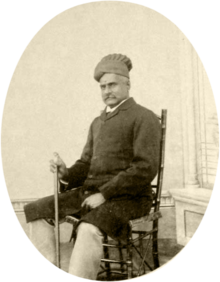 | |
| Born | 29 April 1848[1][2] Kilimanoor, Travancore |
| Died | 2 October 1906 (aged 58) Attingal, Travancore, British Raj |
| Occupation | Painter, artist |
| Signature | |
 | |
Raja Ravi Varma Coil Thampuran[3] (29 April 1848 – 2 October 1906) was an Indian painter and artist from the princely state of Travancore (now southern Kerala and parts of Tamil Nadu) who achieved recognition for his paintings depicting scenes from Indian literature and mythology including the epics Mahabharata and Ramayana. He is considered among the greatest painters in the history of Indian art and his works among the best examples of the fusion of Indian traditions with the techniques of European academic art[citation needed]. Varma's paintings portrayed sari-clad women in a graceful manner, which became an important motif of that time with reproductions being found in many homes.[4]
Contents
[hide]Personal life[edit]
Raja Ravi Varma was born Ravi Varma Coil Thampuran on 29th April, 1848 [5] in Kilimanoor palace in the erstwhile Thiruvithankur in Kerala. His father Ezhumavil Neelakanthan Bhattatiripad was an accomplished scholar, who hailed from the Ernakulam district in Kerala. His mother Umayamba Thamburatty was a poet and writer whose work Parvati Swayamvaram was published by Varma after her death. Ravi Varma had 3 siblings namely Goda Varma (born 1854), Raja Varma (born 1860) and Mangala Bayi, who was also a painter. As per the Marumakkathayam tradition, the name of the maternal uncle (Raja Raja Varma) was prefixed to his name and later he was referred to as Raja Ravi Varma.[6]
Varma was married to Puratathi thirunal Bhageerathi Thamburatty of the royal house of Mavelikkara and they had two sons and three daughters. Their elder son, Kerala Varma, born in 1876 went missing in 1912 and was never heard of again. Their second son Rama Varma (born 1879), an artist who studied at the JJ School of Arts, Mumbai, married to Gowri Kunjamma, sister of Dewan PGN Unnithan. Varma's eldest daughter, Ayilyam Nal Mahaprabha, appears in two of his prominent paintings and was mother of Maharani Pooradam thirunal Sethu Lakshmi Bayi, the Regent of Travancore. Their second daughter, Thiruvadira Nal Kochukunji was the mother of Amma Maharani Moolam Thirunal Sethu Parvathi Bayi and the grandmother of Maharajah Chithira Thirunal Balarama Varma. Their third daughter, born in 1882, was Ayilyam Nal Cheria Kochamma.
His descendants comprise the Mavelikara Royal house while two of his grand daughters, including the said Sethu Lakshmi Bayi and Sethu Parvathi Bayi, were adopted to the Travancore Royal Family, the cousin family of the Mavelikara House, to which lineage the present Travancore Maharajah (Titular), Uthradom Thirunal Marthanda Varma, belonged. Well known among his descendants are writers Aswathi Thirunal Gowri Lakshmi Bayi,Shreekumar Varma, artist Rukmini Varma and classical musician Aswathi Thirunal Rama Varma among others.
Art career[edit]
Varma was patronized by Ayilyam Thirunal, the then Maharajah of Travancore and began formal training thereafter.[6] He learned the basics of painting in Madurai. Later, he was trained in water painting by Rama Swami Naidu and in oil painting by Dutch portraitist Theodor Jenson.
The British administrator Edgar Thurston was significant in promoting the careers of Varma and his brother.[7] Varma received widespread acclaim after he won an award for an exhibition of his paintings at Viennain 1873. Varma's paintings were also sent to the World's Columbian Exposition held in Chicago in 1893 and he was awarded three gold medals.[8] He travelled throughout India in search of subjects. He often modelled Hindu Goddesses on South Indian women, whom he considered beautiful. Ravi Varma is particularly noted for his paintings depicting episodes from the story of Dushyanta and Shakuntala, and Nala andDamayanti, from the Mahabharata. Ravi Varma's representation of mythological characters has become a part of the Indian imagination of the epics. He is often criticized for being too showy and sentimental in his style but his work remains very popular in India. Many of his fabulous paintings are housed at Laxmi Vilas Palace, Vadodara.[9]
Raja Ravi Varma Press[edit]
Apparently on the advice of the then Dewan (Prime Minister) of Travancore, T. Madhava Rao, Ravi Varma started a lithographic printing press in Ghatkopar, Mumbai in 1894 and later shifted it to Malavli near Lonavala, Maharashtra in 1899. The press was managed by Varma's brother, Raja Varma. In 1901 the press was sold to his printing technician from Germany, Mr. Schleicher and later closed down after it was gutted in an accidental fire.[10] The oleographs produced by the press were mostly of Hindu gods and goddesses in scenes adapted mainly from the Mahabharata, the Ramayana and the Puranas. These oleographs were very popular and continued to be printed in thousands for many years, even after the 1906 death of Ravi Varma.
Honours[edit]
In 1904, Viceroy Lord Curzon, on behalf of the British King Emperor, bestowed upon Varma the Kaisar-i-Hind Gold Medal. A college dedicated to fine arts was also constituted in his honour at Mavelikara, Kerala. Raja Ravi Varma High School at Kilimanoor was named after him and there are many cultural organizations throughout India bearing his name. In 2013, the crater Varma on Mercury was named in his honor.[11] Considering his vast contribution to Indian art, the Government of Kerala has instituted an award called "Raja Ravi Varma Puraskaram", which is awarded every year to people who show excellence in the field of art and culture.
List of major works[edit]
The following is a list of the prominent works of Ravi Varma.
- Village Belle
- Lady Lost in Thought
- Damayanti Talking to a Swan
- The Orchestra
- Arjuna and Subhadra
- The heartbroken
- Swarbat Player
- Shakuntala
- Lord Krishna as Ambassador
- Jatayu, a bird devotee of Lord Rama is mauled by Ravana
- Victory of Indrajit
- The gypsies[attribution needed]
- A Lady Playing Swarbat
- Lady Giving Alms at the Temple
- Lord Rama Conquers Varuna
- Gheevarghese Mar Gregorios of Parumala
- Nair Woman
- Romancing Couple
- Draupadi Dreading to Meet Kichaka
- Shantanu and Matsyagandha
- Shakuntala Composing a Love Letter to King Dushyanta
- Girl in Sage Kanwa's Hermitage (Rishi-Kanya)
- Bharani Thirunal Lakshmi Bayi of Travancore
- Sri Shanmukha Subramania Swami
- Woman holding a fan
In popular culture[edit]
- Bollywood film maker Ketan Mehta directed a movie Rang Rasiya on the life of Varma in 2014 in which Randeep Hooda played the role of the artist
- Indian director Lenin Rajendran made a Malayalam movie named Makaramanju (The Mist of Capricorn) in 2010, which narrates Varma's life at a certain stage in his life. Indian director/cinematographer Santhosh Sivan played the lead role of Varma.
- The Marathi textbook of Maharashtra State Board contains a chapter titled 'अपूर्व भेट' meaning 'A Meeting Like Never Before' portraying Varma meeting Swami Vivekananda. It has been edited from the novel 'राजा रविवर्मा (Raja Ravi Varma)' written by Ranjit Desai.
Bibliography[edit]
English[edit]
- Raja Ravi Varma: Painter of Colonial Indian by Rupika Chawla, Pub: Mapin Publishing, Ahmedabad, March 2010,
- Raja Ravi Varma – Oleographs Catalogueby Dr. D.Jegat Ishwari, Pub: ShriParasuraman, Chennai, 2010, ISBN 9788191002614
- Ravi Varma Classic: 2008, Genesis Art Foundation, Cochin-18;45 clour plate with text by Vijayakumar Menon.
- Raja Ravi Varma – The Most Celebrated Painter of India: 1848–1906, Parsram Mangharam, Bangalore, 2007
- Raja Ravi Varma – The Painter Prince: 1848–1906, Parsram Mangharam, Bangalore, 2003
- Raja Ravi Varma and the Printed Gods of India, Erwin Neumayer & Christine Schelberger, New Delhi, Oxford University Press, 2003
- Raja Ravi Varma: The Most Celebrated Painter of India : 1848 – 1906, Classic Collection, Vol I & II. Bangalore, Parsram Mangharam, 2005
- Raja Ravi Varma: Portrait of an Artist, The Diary of C. Raja Raja Varma/edited by Erwin Neumayer and Christine Schelberger. New Delhi, Oxford University Press, 2005
- Divine Lithography, Enrico Castelli and Giovanni Aprile, New Delhi, Il Tamburo Parlante Documentation Centre and Ethnographic Museum, 2005
- Photos of the Gods: The Printed Image and Political Struggle in India by Christopher Pinney. London, Reaktion Book, 2004
- Raja Ravi Varma:Raja Ravi Varma:E.M Joseph Venniyur,former director of AIR
- Raja Ravi Varma: A Novel,Ranjit Desai -Translated by Vikrant Pande, Pub: Harper Perennial (2013), ISBN 9789350296615
Malayalam[edit]
- Ravi Varma – A critical study by Vijayakumar Menon, Pub: Kerala Lalitha Kala Akademy, Trissur, 2002
- Raja Ravi Varmayum chitrkalayum, Kilimanoor Chandran, Department of Cultural Publications, Kerala Government, 1999.
- Chithramezhuthu Koyithampuran, P. N. Narayana Pillai.
- Raja Ravi Varma, N. Balakrishnan Nair.
Marathi[edit]
- "Raja Ravi Varma", a novel by Marathi language novelist Ranjit Desai translated into English by Vikrant Pande.
See also[edit]
Search Results
MOHINI --- PAINTINGS BY RAJA RAVI VARMA - YouTube
www.youtube.com/watch?v=sHD2FpEF4Lc
Dec 3, 2011 - Uploaded by kshitija1967
RAJA RAVI VARMA was an Indian painter from Travancore.RAJA RAVI VARMA is most remembered for his ...Most Beautiful Women Paintings by Raja Ravi Varma ...
www.youtube.com/watch?v=jXmoqkFvMEY
Jul 6, 2014 - Uploaded by Creative Channel
Raja Ravi Varma (29 April 1848 - 2 October 1906) is the First Indian Modern Painter. His paintings are natural ...RAJA RAVI VARMA-PAINTINGS - YouTube
www.youtube.com/watch?v=qdjHvu6Z8iI
Oct 18, 2010 - Uploaded by M A SHAMNAD ......
RAJA RAVI VARMA THE GREAT INDIAN ARTIST THE KING OF COLOURS ENJOY HIS PAINTINGS.Raja Ravi Varma- A voyage through his paintings with ...
www.youtube.com/watch?v=9-HYPfM-61g
Sep 10, 2014 - Uploaded by JAN JINJU
Raja Ravi Varma- A voyage through his paintings with english subtitles ... Raja Ravi Varma Paintings ...Raja Ravi Varma-A Great World Famous Amazing Painter ...
www.youtube.com/watch?v=M2vp_yiY7tQ
Dec 2, 2010 - Uploaded by Ma Rafeek
http://www.cyberkerala.com/rajaravivarma/paintings.htm http://www.saigan.com/Raja Ravi Varma Paintings (www.IndianSatan.com ...
www.youtube.com/watch?v=E_9zrmvq24M
May 14, 2008 - Uploaded by Radio Malayalam
Before the Brush Dropped is a brilliant documentary made by AVA Productions on the life and works of Raja ...Raja Ravi Varma - The Painter Prince - YouTube
www.youtube.com/watch?v=pkZCKd6u4Sw
Dec 1, 2013 - Uploaded by Om Prakash
Raja Ravi Varma - The Painter Prince ... Raja Ravi Varma- A voyage through his paintings with english ...Raja Ravi Varma Paintings - Greatest Painter In The History ...
www.youtube.com/watch?v=B3IpMnAUz1Y
Nov 12, 2014 - Uploaded by Falcon Tvision
Raja Ravi Varma (29 April 1848 – 2 October 1906) was an Indian painter and artist from the princely state of ...Raja Ravi Varma Paintings - YouTube
www.youtube.com/watch?v=1tbbcvjzIA4
Nov 21, 2010 - Uploaded by Kaja central
Raja Ravi Varma is considered among the greatest painters in the history of Indian art. He won the first prize ..."Rang Rasiya"- film on Raja Ravi Varma's life - YouTube
www.youtube.com/watch?v=g94t-8_n4O8
Aug 11, 2014 - Uploaded by metromatinee.com
Rang Rasiya is an Indian drama film based on the life of the 19th-century Indian painter Raja Ravi Varma. The ...
Stay up to date on results for raja ravi verma.
Create alertSearch Results
Raja Ravi Varma - Wikipedia, the free encyclopedia
https://en.wikipedia.org/wiki/Raja_Ravi_Varma
Raja Ravi Varma Coil Thampuran (29 April 1848 – 2 October 1906) was an Indian painter and artist from the princely state of Travancore (now southern Kerala ...
25 Best Raja Ravi Varma Paintings - 18th Century Indian ...
webneel.com/25-best-oil-paintings-raja-ravi-varma-18th-century-indian-...
Raja Ravi Varma Paintings : Raja Ravi Varma was an Indian artist from the princely state of Travancore (presently in Kerala) who achieved recognition for his ...
Raja Ravi Varma - Cyber Kerala
www.cyberkerala.com/rajaravivarma/
Collection of oil paintings of Raja Ravi Varma (1848-1906), the great artist of Kerala, India.Indian Heritage - Paintings by Raja Ravi Varma
www.indian-heritage.org/painting/ravivrma.html
Raja Ravi varma (1848 - 1906) is famous for his paintings based on Indian mythology & epics. He was was born in Kilimanoor Palace as the son of UmambaRavi Varma Art Gallery
ravivarma.org/
Ravi Varma Virtual Art Gallery featuring images of oil paintings and art works of Raja Ravi Varma and famous artists around the world. Our Raja Ravi V.Kamat's Potpourri: The Genius of Ravi Verma
www.kamat.com › Timeless Theater › Arts of India › Ravi Varma
Jun 24, 2015 - I have been fascinated by the paintings of Raja Ravi Varma (also spelled as Raja Ravi Verma) since my childhood. In our ancestral home, ...MOHINI --- PAINTINGS BY RAJA RAVI VARMA - YouTube
www.youtube.com/watch?v=sHD2FpEF4Lc
Dec 3, 2011 - Uploaded by kshitija1967
RAJA RAVI VARMA was an Indian painter from Travancore.RAJA RAVI VARMA is most remembered for his ...Profile of the Month - Ravi Varma - Indian Art Circle!!
www.indianartcircle.com/arteducation/ravi.shtml
An artist who is credited with bringing about a momentous turn in the art of India, Raja Ravi Varma inexorably influenced future generations of artists from ...Raja Ravi Varma - Oil Painting Reproductions
www.1st-art-gallery.com/Raja-Ravi-Varma/Raja-Ravi-Varma-oil-painting...
Raja Ravi Varma - The Raja Ravi Varma paintings on this page are available from 1st-Art-Gallery as handmade reproductions on canvas. Click on the oil ...Raja Ravi Varma - Cultural India - Culture of India
www.culturalindia.net › Indian Art › Indian Painters
Raja Ravi Varma is known for his amazing paintings based on Indian epics. Know about Raja Ravi Verma biography & life history.Searches related to raja ravi verma
- Raja Ravi VarmaBorn: April 29, 1848, KilimanoorPeriod: Academic art
Kharghar, Navi Mumbai, Maharashtra - From your Internet address - Use precise location


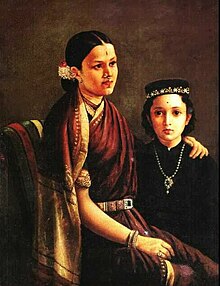


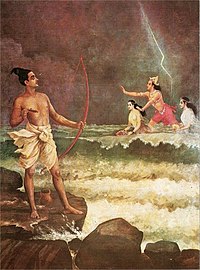


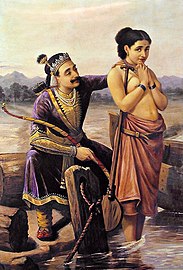
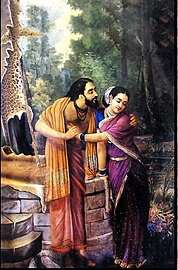








No comments:
Post a Comment